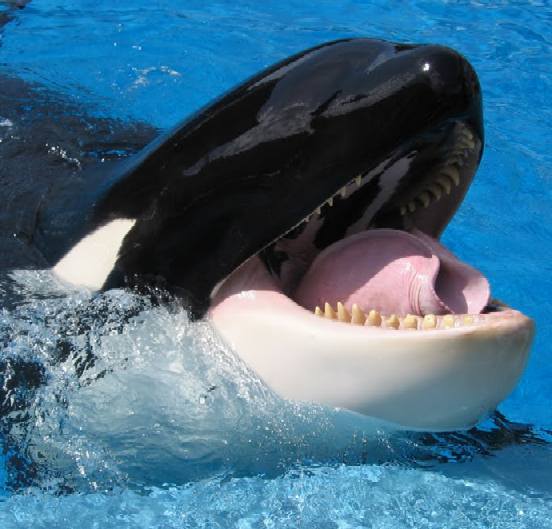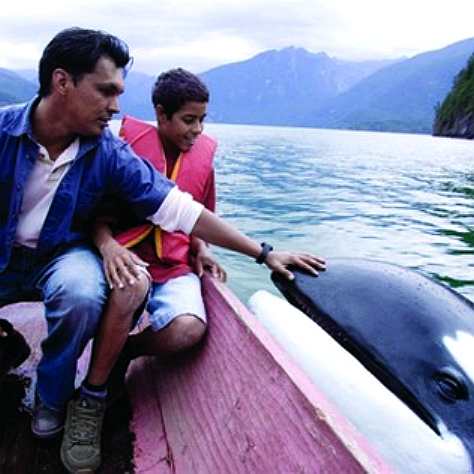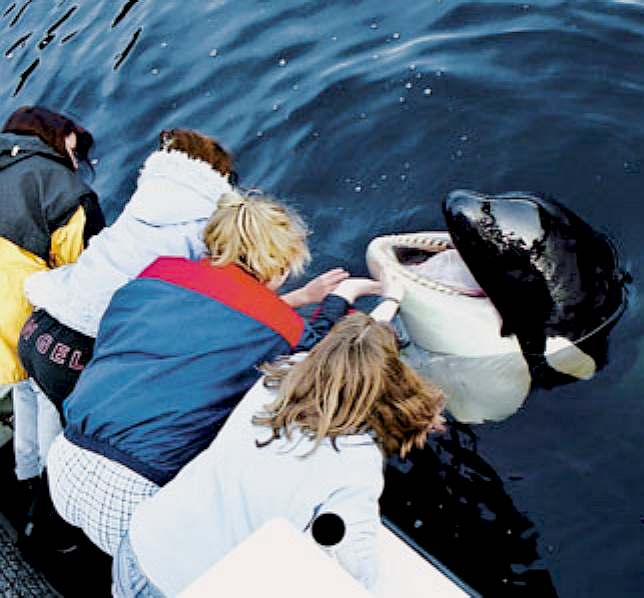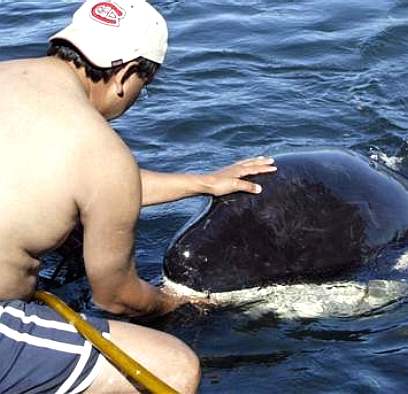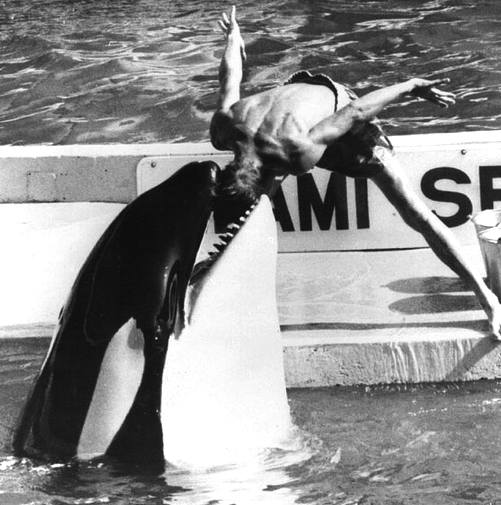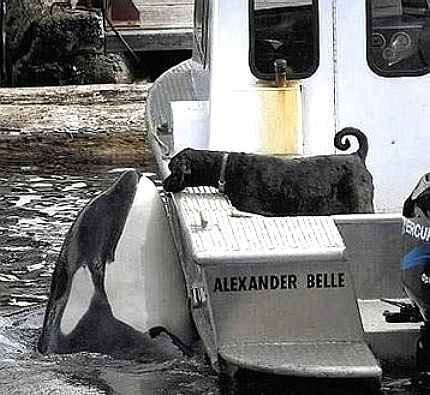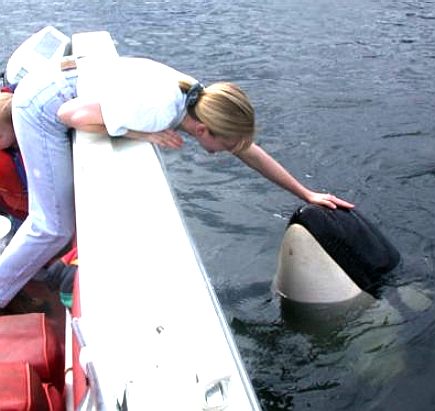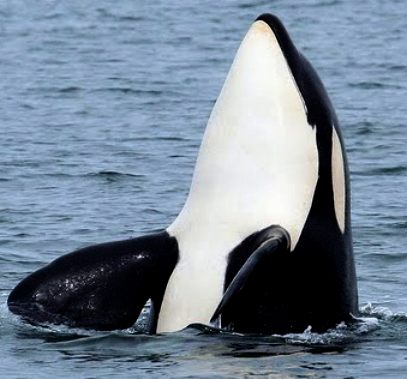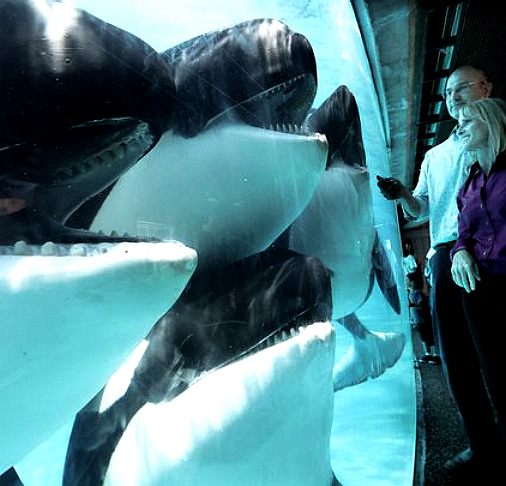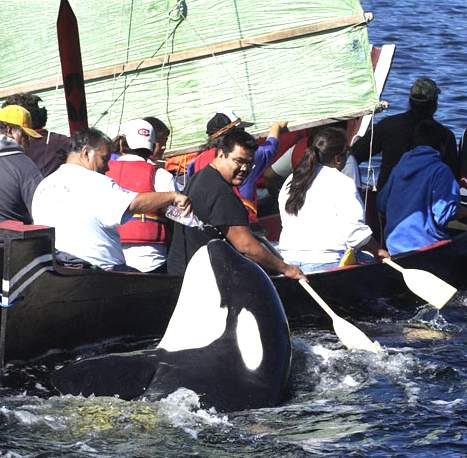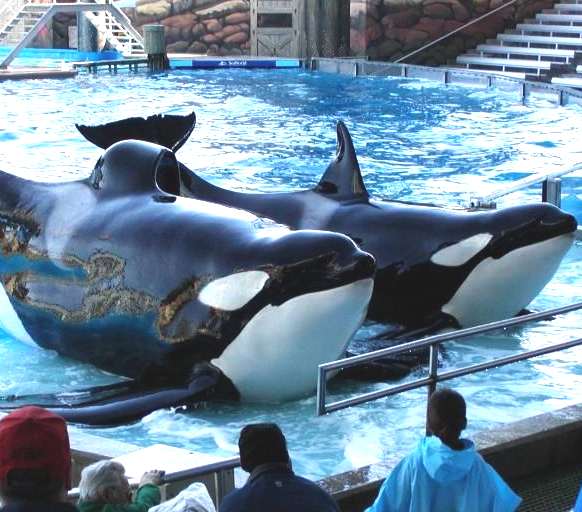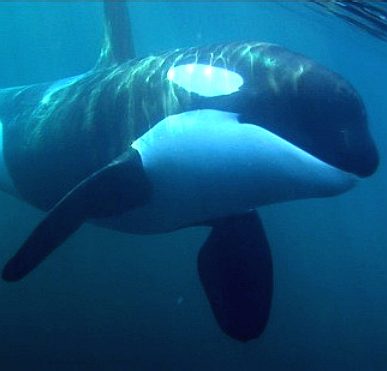|
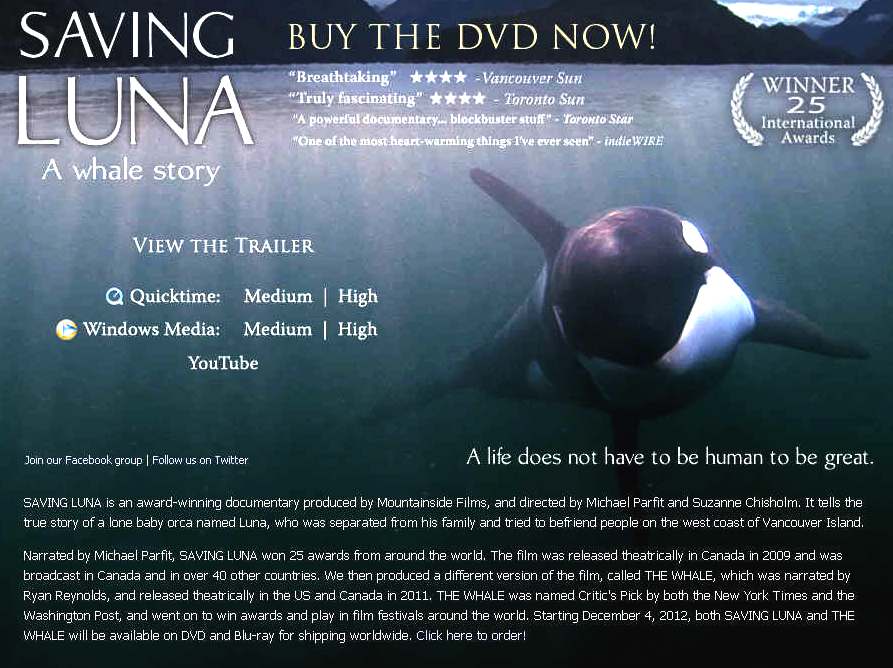
SAVING LUNA is an award-winning documentary produced by Mountainside Films, and directed by Michael Parfit and Suzanne Chisholm. It tells the true story of a lone baby orca named Luna, who was separated from his family and tried to befriend people on the west coast of Vancouver Island.
Narrated by Michael Parfit, SAVING LUNA won 25 awards from around the world. The film was released theatrically in Canada in 2009 and was broadcast in Canada and in over 40 other countries. We then produced a different version of the film, called THE WHALE, which was narrated by Ryan
Reynolds (Green Lantern, The
Proposal), and released theatrically in the US and Canada in 2011. THE WHALE was named Critic's Pick by both the New York Times and the Washington Post, and went on to win awards and play in film festivals around the world. Starting December 4, 2012, both SAVING LUNA and THE WHALE will be available on DVD and Blu-ray for shipping worldwide.
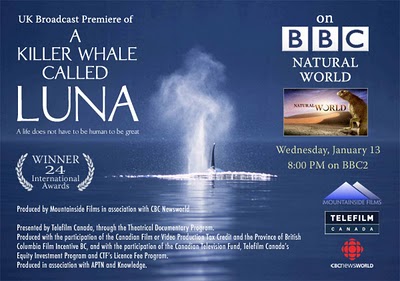
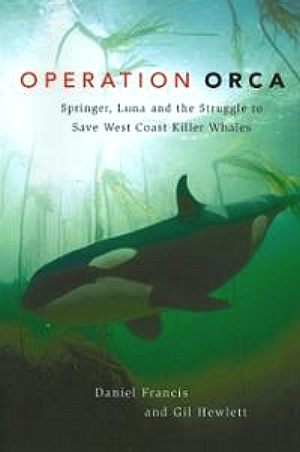
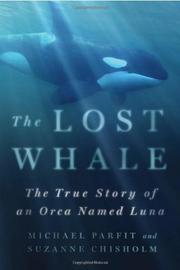
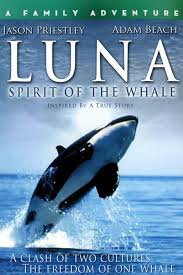
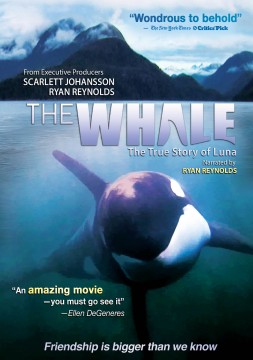
Mike Maquinna returns to his home town of Gold River on Vancouver Island to attend the funeral of his father,
Mowachaht/Muchalaht First Nations Chief Ambrose Maquinna. With a troubled past including alcoholism, Mike does not intend on staying to claim his rightful place as Chief, but intends on returning to his current life as a logger in Bella
Coola. Meanwhile, a lone Orca whale - dubbed Luna by western media - has been spotted in the area, the whale unusually socialized to boats and humans. Luna, suspected to be a missing juvenile from a pod now living south of the area in Puget Sound, becomes a public sensation, both as a spectacle and a human interest story. The Department of Fisheries & Oceans
(DFO) administration, led by Ted Jeffries, plans on reuniting Luna with his pod, which means capturing the young
Orca. This move by DFO does not sit well with Mike and the band, who see the spirit of Ambrose inhabited within Luna. They feel it best for Luna to decide where he chooses to live. This issue - in combination with caring for a troubled band youth, Adam Ross - reintegrates Mike into his band life. The band does have an ally in local DFO officer Jill Mackay, who - behind the scenes - is continually butting heads with her boss, Jeffries, the public face of the
DFO.
Luna (September 19, 1999 – March 10, 2006) also known as L98 or Tsuux'iit, was a killer whale (orca) born in Puget Sound. After being separated from his mother while still young, Luna spent five years in Nootka Sound, off the west coast of Vancouver Island.
Although Luna was healthy and his presence in the area delighted tourists and drew a large paparazzi, there were concerns that his behavior was endangering people. After years of debate, the Canadian Department of Fisheries and Oceans (DFO) authorized an effort in June 2004 to capture Luna and return him to his family. However, the plan was ultimately thwarted by the Mowachaht/Muchalaht First Nations, who believed Luna was a reincarnation of a former chief. The orca was killed by a tugboat in 2006.
ORIGINS
Luna was born into a population known as the Southern Resident Killer Whale community. This population, which consisted of approximately 80 killer whales at the time of Luna's birth, has been extensively studied since the 1970s. Scientists have learned to recognize each individual in the population by
photo identification, and can thus track individual movements and social relationships year after year. Thus it is known that Luna was born into a group known as the L2 matriline, which consisted of the matriarch, Grace (L2), Luna's uncle, Orcan (L39), Gaia (L78), Wavewalker (L88), and Luna's mother, Splash (L67). The L2 matriline belongs to a larger group called L-Pod. Southern Resident killer whales of both sexes form extremely stable family bonds and remain with their mothers throughout their lives.
Luna was first spotted on the morning of September 19, 1999, near the San Juan Islands of Washington, as a newborn alone with his mother. The first person to see him was the operator of a whale watching business, who immediately noticed that the behaviour of the pair was unusual. Killer whale mothers are usually surrounded by other members of their pod when they give birth, and are inseparable from their infants who swim closely by their sides. Luna and his mother were in proximity but appeared relatively disassociated from each other, and there were no other whales nearby. Later that day, Luna was seen leaving his mother to follow whales from K pod and did not reconnect with her for two or three days. Kiska (K18), one of the whales in K pod, had recently given birth to a stillborn calf and may have been lactating when she encountered Luna.
Southern Resident killer whales spend summers near the coast of British Columbia, Canada and Washington, leave the area each fall, and return in the spring. It is not known where they spend the winter. The temporary separation of Splash and Luna is so unusual amongst
killer whales that it led to speculation about whether Splash was indeed Luna's mother, however they reappeared together near the San Juan Islands in the spring of 2000 and appeared to have a normal mother-calf relationship throughout the summer. On September 23, Luna was seen leaving the area with the rest of his relatives, and beside his uncle, Orcan.
Luna was given the name "L98" at birth according to the scientific naming conventions for resident killer whales. A Seattle newspaper held a naming contest in 2000 which resulted in L98 being given the common name Luna, Latin for
moon. At the time, it was not known if Luna was male or female. The contest winner, an 8-year-old girl from Bellingham, explained, "The orca whale explores the ocean like the moon explores the Earth and that is why his/her name is Luna."
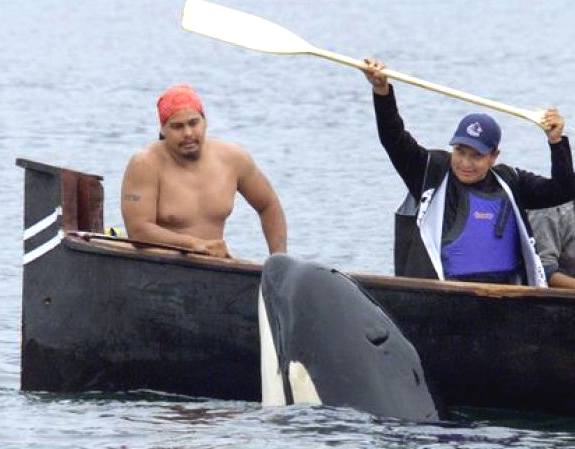
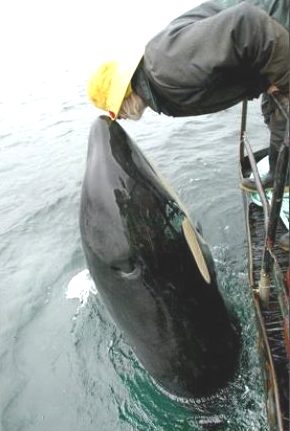
When
a wild animal gets this close and does not bite, nobody would turn the creature away. A
phenomenon like this should have been more closely monitored - with
perhaps special support for the whale. The move to relocate should have at
least been tried, as with lions that are hand reared by humans, they
eventually have to be returned to the wild. See: Born Free, one of my favorites.
The accidental death of Luna is a tragedy that tugs at the heart strings.
I can well imagine the feelings of anguish of the tug skipper that killed
this magnificent creature. I would have hit the bottle, and I'm teetotal.
APPEARANCE NOOTKA SOUND
Over the winter of 2000-2001, five members of L-Pod disappeared, considerably more than the typical mortality rate of one or two animals per year. Among those missing and presumed dead was Orcan, who was 25 years old and in his prime. The unusual losses of that winter led to speculation that L-Pod had been struck by a catastrophic event that Luna might have witnessed. It is common for other members of a pod, including uncles such as Orcan, to babysit young killer whales. It was speculated that Luna might have been traveling with Orcan away from the rest of the pod when Orcan died. After Luna did not reappear, he was declared dead by local researchers. However, in early July 2001, Luna re-appeared alone in Nootka Sound on the northern west coast of Vancouver Island, hundreds of kilometres from any other Southern Resident killer whale. A year later, the Mowachaht/Muchalaht people of northern Vancouver Island named L98 Tsux'iit after the tribe's late Chief, Ambrose Maquinna. The Mowachaht/Muchalaht claimed that because Maquinna had declared that after his death he wished to return as an orca or a wolf, that the appearance of Luna four days after his death was symbolic and likely to be his reincarnation.(See image of plaque commemorating the incident. Click through to the original at Wikimedia Commons for a highly-legible version)
At first Luna, like most wild killer whales, avoided boats and kept his distance from people. DFO tried to keep Luna's presence in Nootka Sound a secret for as long as possible to avoid a rush of visitors, and did not even tell other scientists about Luna until December 2001, by which time he had been there for six months.
However, everyone's attention was diverted from Luna as Springer (A73), another orphan calf, had turned up alone in Puget Sound. Springer soon became the center of attention that year.
The Namu Shuttle
A Seattle-based non-profit organization, Orca Conservancy, which initiated the campaign to rescue and repatriate Springer and helped raise the funds for that successful effort, also took the lead in calling for a similar effort on behalf of Luna. In March 2002, the organization teamed up with Earth Island Institute and the Free Willy-Keiko Foundation in presenting a fully funded, seven-point, peer-reviewed rescue plan for Springer to National Marine Fisheries Service (NMFS), the central component of the plan being the so-called "Namu Shuttle", leading the orca into a hydrodynamic seapen and then towing it to Johnstone Strait. The procedure was used successfully in 1965 by Ted Griffin to translocate Namu, the first captive orca, from northern Vancouver Island to Seattle, almost the exact distance that would be required for Springer's move. The groups later offered an additional option
- transporting Springer via a high-speed hovercraft, which was offered to the project through the
Canadian Consulate in Seattle. On both options, Orca Conservancy and Earth Island/Free Willy-Keiko Foundation proposed that after delivering Springer to her natal waters, the rescue team and critical equipment would be kept in place and marshaled for a return trip
- the translocation of Luna from Nootka Sound, BC to his natal waters in Puget Sound, Washington.
The "Namu Shuttle" proposal from Orca Conservancy and Earth Island Institute/Free Willy-Keiko Foundation linking the Springer and Luna efforts was reported on regional television newscasts and print media and was gathering broad support among the public. By May 2002, people on both sides of the border were clamoring for federal agencies to take direct action to save the whales. Since Springer was a Canadian whale in U.S. waters, NMFS was the governing authority that was responsible for greenlighting the rescue. And as Luna was a U.S. whale in Canadian waters, the agency that needed to approve any rescue effort in Nootka Sound was the Department of Fisheries and Oceans (DFO) Canada
- and by all indications, DFO did not intend on doing anything for Luna.
“There is certainly less of a sense of urgency with L-98, compared to A-73,” said John Ford, Canadian Fisheries and Oceans. “But we are still not confident about his prospects for the long term."
They
did not really know what a treasure Luna was. Aquariums spend fortunes
keeping Orcas in captivity for humans to come as see. Here was a whale
swimming free, giving people the chance to see and touch a very friendly
animal - at almost no cost, other than a little attention now and again.
The authorities should have tagged the whale to keep track of it and so be
able to warn boat operators to give Luna a wide berth.
Luna would be left to linger in Nootka Sound, and the focus soon turned to Springer. But once that historic rescue, translocation and repatriation was completed in July and August 2002, all eyes again turned to Luna. NGOs like Orca Conservancy, OrcaLab, Veins of Life Watershed Society and Reunite Luna pressed hard for DFO to take action to save Luna, "quid pro quo," as Orca Conservancy's Michael Harris said on Seattle television. "We brought back your orca, now let's do something about ours." But DFO's public response was firm—Luna would be left where he was. The agency stated many reasons not to intervene, but outlined three major ones—first, Luna was thriving in Nootka Sound and was posing no danger to himself or others; second, it was premature to justify intervention on behalf of Luna based on the apparent success of the Springer effort, as the true test of whether or not Springer's translocation had worked would be the following July if and when she returned with her family to its summer feeding grounds in Johnstone Strait. Many DFO biologists quietly predicted that she would not survive the winter. Lastly, even if it were deemed necessary to intervene with Luna, and Springer successfully returned to Johnstone Strait, DFO simply did not have the funding to take on such an action.
Contact with humans
By the summer of 2002, word had spread about the killer whale in Nootka Sound and boaters started to visit. In their book, Operation Orca: Springer, Luna and the Struggle To Save West Coast Killer Whales, Daniel Francis and Gil Hewlett describe how Luna had begun to interact with boats:
"Luna nudged their boat, spun it around like a toy in a bathtub, bounced it up and down by pushing on the hull and spy-hopped directly in front to keep it from speeding away. It was not the behaviour of a wild animal shying away from human contact. As the summer progressed, he became more insistent in his interactions and harder for boaters to escape."
Killer whales are intensely social, and boats and people provided the companionship and physical contact that Luna would normally have received from his mother and from other whales. A Canadian federal fisheries officer said in 2003, "I don't think he realizes he's a whale. He thinks he's one of the boys."
It is illegal in Canada and in the U.S. to disturb a wild marine mammal. Cetaceans which lose their fear of boats generally fare poorly in the long term, as they can be injured by boat propellers or accidentally run over. A playful whale can cause significant damage to boats, and can accidentally tip a boat putting its occupants in danger. DFO posted signs asking the public to keep its distance from Luna, and sent out pairs of monitors to educate the public and try to keep them away from him.
By September 2002, Luna was determined to get attention, so he started following the "Uchuck III", the supply boat that first saw Luna which drove up and down bringing supplies to fish camps and loggers everyday. Luna saw it went to a dock full of attention. Luna had started to visit the dock at Gold River, a town along one of the inland waterways connected to Nootka Sound. It was at this time that Luna started to cause disturbances, and in some cases actually caused damage to vessels and a float plane. There were reports that people were feeding Luna potato chips and beer. Luna received some minor injuries, probably from collision with boats. Some people were fined for disturbing the orca.
Some who met the playful young whale were profoundly moved by him. Journalists Michael Parfit and his wife, Suzanne Chisholm, visited Gold River in 2004 for a short writing assignment for Smithsonian Magazine, but were so drawn to Luna that the couple ended up staying for three years. Parfit said in 2009:
"He needed this friendship - he wanted connection. It's so powerful, that you have people from all walks of life who became dramatically engaged in caring about this single life at sea. He was interested in human beings for a social connection. Luna wanted eye contact, he wanted physical, he wanted almost this mental contact. So how can you not respond to that? We were not sort of whale-huggers. We just went there to cover a story. And we were captivated by the character
- by him - almost immediately."
In late 2005, after more than a year of observing Luna from a distance in Nootka Sound, and after interviewing dozens of people on Nootka
Sound, including many of the stewards who had been paid to keep Luna away from people, Parfit and Chisholm concluded that it was not possible to keep Luna away from people. "Keeping people away from Luna so he does not get habituated hasn't worked, because Luna won't stay away from people," said Chisholm. "We think the only way to keep this highly social animal alive is to give him a human family until his whale family comes to get him." Aware that, "for us the idea of getting involved in a story that we're trying to cover was a fundamental break from journalistic rules," they felt that getting involved was the morally right thing to do.
“Parfit and Chisholm thought a whole new approach was needed to protect Luna from boaters and boaters from Luna," according to "OPERATION ORCA: Springer, Luna and the Struggle to Save West Coast Killer Whales." "They proposed the creation of a surrogate family, a 'foster pod,' to which Luna could attach himself. A select group of people, including the Mowachaht/Muchalaht, would be authorized to associate with Luna, keeping him out of trouble but also teaching him to follow along beside them. Eventually, Parfit hoped, Luna would be encouraged to swim to the outer reaches of Nootka Sound, where he might encounter his own family and be reunited with them. Meanwhile, Parfit had come to believe that Luna craved and needed human contact and that it was wrong to deny it. Luna had a deep emotional impact on people. While knowing not to anthropomorphize the animal, Parfit, Ed Thornburn, the Kakawin Guardians and others who came into regular contact with him could not help feeling that Luna’s insistent interactions with people showed that he was desperately lonely. They were caught in a conundrum. Luna needed to be kept wild, which meant interactions with him had to be kept at a minimum. But he was an intensely social animal. How could that sociability be appeased in the absence of other whales?
“The downside of Parfit’s proposal was that it would further habituate Luna to human interaction and lessen the chance that he might ever reintegrate with his family group. When Parfit’s plan got no official response, he more or less initiated it himself. During the winter of 2005-2006 he and Chisholm began operating their own stewardship program, spending time in their Zodiac watching Luna and from time to time leading him away from troublesome encounters with fish farms or other boats. Where this would have led is anyone’s guess."
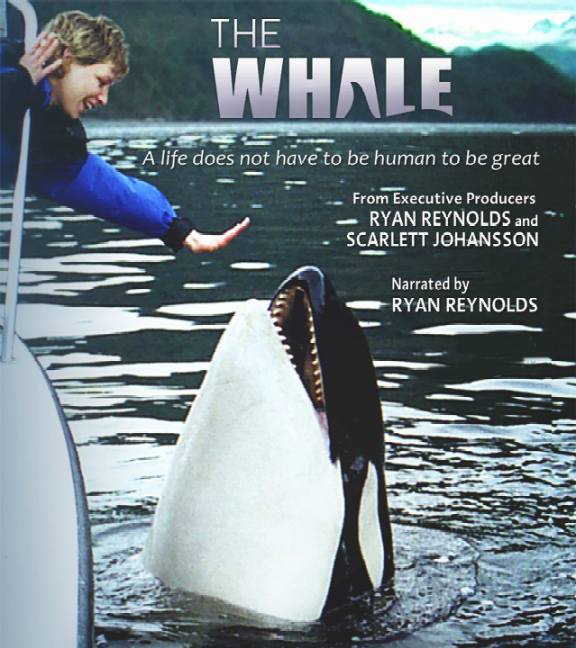
DEBATE
From January to July 2002, attention was diverted from Luna when Springer (A73) turned up orphaned and alone in Puget Sound, Washington. Although it is extremely rare for killer whale calves to be found alone and the cases of Luna and Springer emerged within a year of each other, no connection between their situations has ever been found. In July 2002, Springer was captured and relocated from Puget Sound to her family's summer waters off northeastern Vancouver Island.
By the summer of 2003, it was apparent that Springer was healthy and had bonded with close relatives. This raised hopes that Luna could also be moved home, and that he would bond with his family and resume a normal life. Luna was healthier than Springer, and his mother was still alive. Paul Spong of OrcaLab said in 2004, " I don't have any doubts about Luna's future, once he returns to the side of his mum." However, other killer whale experts expressed skepticism that a reunion would work, as it was unknown why Luna had left his family in the first place. Luna had spent much of his early life apart from other killer whale role models, and had not had a chance to develop the social skills required in pod life. Even Springer's reunion had not been wholly smooth – she received extensive teeth-rake marks from other killer whales in the first days of her release. With his limited social experience, scientists had doubts about whether Luna, if he grew to adulthood, would be able to successfully attract females to mate with. In addition to questions of whether relocating Luna would succeed, there was the philosophical question of whether it was appropriate for humans to intervene in the life of a wild animal rather than let nature take its course.
The DFO has jurisdiction over marine mammals in Canadian coastal waters. For several years, the DFO's approach was to monitor Luna and try to minimize his interactions with people. Many hoped that the Luna would reunite naturally with his family if they passed by Nootka Sound. Officials were afraid of a public relations disaster should a reunion effort fail in front of worldwide media attention.
By the spring of 2003, the consensus amongst a panel of experts convened by the DFO was that some form of intervention was necessary; however, there was little consensus on what exactly to do. As Luna was physically healthy and Nootka Sound had enough fish to sustain him, the DFO did not believe that relocating Luna was urgently needed. The DFO's slowness to act was heavily criticized by many whale advocates, as the longer Luna was away from his pod, the lower the chances of successful re-integration.
RELOCATION ATTEMPTS
Over the summer of 2003, the DFO came under increasing public pressure to address the Luna matter.
The Department agreed to provide funding for the Luna Stewardship Project, founded by former DFO biologist Mark Pakenham and calling private individuals to monitor Luna in Nootka Sound and keep people away from the orca. However, days after it cut funding to the Luna Stewardship Project, it was reported that a contractor hired by DFO to monitor the crisis had been seen beating the orca at the Gold River dock. Clearly, interactions between humans and boats and this increasingly social and fast-growing male orca were becoming dangerous. It quickly dispelled DFO's argument that Luna was thriving and safe where he was.
Also in July, DFO's second argument for inaction was rendered moot - researchers confirmed that Springer not only had returned to Johnstone Strait with her family after about nine months in the open ocean, but by all indications she was thriving as a wild whale.
KOMO 4 News reported that "Springer's apparent success also gives some orca groups ammunition to seek a second attempt. Luna, a lone male orca, continues to frolic with boaters in Vancouver's Nootka Sound. As recently as last May Canadian scientists decided not to interfere and let nature take its course. The Orca Conservancy for one hope that Springer's return proves the same course could be taken with Luna to re-introduce him to his native L-Pod."
"We hope that we give Luna the same chance that we gave Springer," explains Michael Harris, President of Orca Conservancy. "Let Luna hear his family. If you give these animals a chance to repatriate with other orcas, away from humans, if you give them a choice between humans and orcas, every time they choose other orcas."
DFO's last argument for not taking action to save Luna - the lack of funds
- was put aside at a press conference at Seattle Aquarium in October 2003 conducted by U.S. Senator Maria Cantwell, the Regional Director of the NMFS, the Washington Department of Fish and Wildlife and the
U.S.
Navy. Sen. Cantwell announced a commitment of "$100,000 USD or more if needed" toward the immediate rescue and repatriation of Luna to Puget Sound, and called on the Canadian government to match that commitment. All indications were that DFO would, and Luna might soon be going home.
"I think it's miraculous how fast this has come together," said Harris on KOMO 4 News.
As expected, a few days later,the Minister of Fisheries and Oceans Canada, Robert Thibault, announced that Canada would match the U.S. offer with $135,000 CDN. However, DFO, without consulting its Scientific Advisory Panel, announced that Luna would not be moved until the spring of 2004.
The decision to delay the operation drew a wave of objections from scientists and advocates on both sides of the border, most of which were recommending immediate action—Southern Resident orcas were still present in Puget Sound and the Strait of Georgia, Luna's repatriation site, and most importantly, boat traffic in the area was on the wane. Conditions were perfect to for the repatriation attempt. And yet, DFO decided to wait. One critical scientist on the Panel reported the federal government had prohibited him from commenting publicly on how best to move Luna.
"Lance Barrett-Lennard, a research scientist at the Vancouver Aquarium, said news last week that the federal government wanted to wait until spring for the move was a surprise. 'That caught us unprepared a little bit – (the panel) was not notified. It was not our recommendation.'"
At a conference on Orcas Island, Washington on April 5, 2005, DFO unveiled its plan to rescue and repatriate Luna. It would involve two phases
- "Plan A" would be to attempt to employ a DFO boat in leading the orca out of Nootka Sound and into Southern Resident whales expected to appear at least in passing off the mouth of Nootka in May or June. If that proves impossible, then in June DFO would go to "Plan B," the hard capture and translocation of the orca to a repatriation site at Pedder Bay, on the southern end of Vancouver Island, where he would be released to his family.
However, the Canadian government was getting repeated warnings from NGOs that opposition was growing among the region's First Nations to the rescue of Luna. They began to voice their opposition to DFO and its primary contractor, Vancouver Aquarium, coming into their ancestral waters and removing the whale.
Orca Conservancy came out strongly in support of the Mowachaht/Muchalaht, demanding that DFO do a better job consulting First Nations in the matter
- as NMFS had done successfully with the Namgis First Nation during the Springer effort. Meetings were conducted between DFO and Mowachaht/Muchalaht Chief Mike Maquinna, the son of Ambrose, but the impasse continued. Other First Nations bands throughout British Columbia also expressed their support for the Mowachaht/Muchalaht and their opposition to the capture. At this stage, Orca Conservancy initiated a mediation between Chief Maquinna and DFO. In April, through an introduction from Namgis Chief Bill Cranmer, the organization sent its Board Member Fred Felleman to Gold River to meet with Chief Maquinna and discuss the crisis. The Mowachaht/Muchalaht reiterated their position, but gave its assurance that it would not block efforts to reunite Luna with his family via Plan A, the boat-follow option. As summer approached, the band actually began providing material support to what was now being called "the soft introduction" of the orca to its natal pod.
By May 2004, DFO and Vancouver Aquarium, assisted by the leading NGOs, were initiating Plan A. The first step was to train Luna to follow the designated DFO boat, hopefully out of Nootka Sound and, if and when the time came, into the path of passing Southern Resident orcas. DFO agents reported that the whale responded positively to the training, and video shot by KING 5 News (NBC Seattle) proved that the whale was following the boat well outside the entrance to Nootka Sound, a critical threshold if the team needed to intercept a passing wild group. NGOs began establishing a sightings network along the remote west coast of Vancouver Island, utilizing existing land-based spotters as well as sophisticated underwater microphones, or hydrophones, sourced by Orca Conservancy and American Cetacean Society/Puget Sound and operated by Keith Wood of Anon.org at Yuquot (Friendly Cove). The coast was also monitored periodically by volunteer pilots looking for whales.
Hopes for the boat-follow rose notably in mid-May 2004 when some of Luna's family was sighted off Strawberry Island, BC, the west side of Vancouver Island but still some 100 kilometers away from Nootka Sound. The pod never came closer. In late May, researchers confirmed that the rest of the Southern Resident Community of orcas had in fact taken the route along the east coast of Vancouver Island, eliminating any chance of a natural
reunion. By June, DFO began preparations for Plan B.
"With the recent sightings of Luna's pod in the Juan de Fuca Strait, we believe the chances of a natural reunification in the Nootka Sound area have been exhausted," said Marilyn Joyce, Regional Director of DFO.
"It was like finding a needle in a haystack," conceded Harris. "And it's tempting, because there's still L-Pod off the coast, so it's still tempting to say, 'Hey, we can do this,' but you know, they gave it the best chance they can give it, and it just didn't work out."
Meanwhile, tensions were growing with the Mowachaht/Muchalaht in Nootka Sound. A report surfaced that Vancouver Aquarium Director John Nightingale had allegedly alerted Emergency Services at Gold River to prepare for tear-gas injuries. Nightingale also raised concerns on both sides of the border by his request to DFO to close the airspace above the operation to news helicopters. Access to the main dock where the capture team would operate was severely restricted, and no First Nations representative was given access. Furthermore, OrcaLab, which had hosted DFO and Vancouver Aquarium team members during the Springer effort, was now being banned by Nightingale from the Gold River dock. OrcaLab and its Director, Dr. Paul Spong, were strong advocates of the First Nations during the Springer project, as well as a critical partner up until that time on the Luna effort, conducting the Luna Research Project under a DFO permit that previous winter. Denying OrcaLab was considered by many both a strategic mistake and a grave insult, and another blow to citizen oversight. Consternation also was growing about the fact that DFO and Vancouver Aquarium had placed a strict embargo on media access to the operation, and yet had contracted with a private production company to shoot pool footage of the capture and translocation of Luna, in return for allowing the company to retain exclusive license to the video.

At this time, Harris was invited to Chief Mike Maquinna's house in Gold River to discuss the crisis and a unique mediation was crafted—a First Nations-assigned monitor and a broadcast photojournalist, both of whom would be given unfettered access to the operation at all time. The NGOs and the
U.S. Congressional delegation supporting and helping to fund the Luna effort would stand with the Mowachaht/Muchalaht as it delivered a Demand Letter to DFO. The Mowachaht/Muchalaht would assign the monitor (which later became Nu-Chuh-Nulth reporter David Wichar) and Orca Conservancy would provide the band a veteran network photojournalist (Kevin Ely). Should the First Nations deem the capture and translocation is going forward in what the band deemed a disrespectful manner, it would have two ways of putting a stop to it—through the print pieces published by Wichar, and more immediately, the compelling video that Ely would distribute to the satellite media trucks present at Gold River. It was clear to everyone that public pressure was the sole reason DFO was finally intervening on behalf of Luna; public pressure, presumably, could also put a stop to it. The Demand Letter was written by Chief Maquinna and sent to DFO, and after significant pressure on the U.S. side, the agency finally assented to the mediation agreement. The capture would go forward.
On June 15, 2004, the translocation operation was initiated. DFO began trying to lure Luna into a floating pen in order to rehabilitate him in the same manner as Springer. As the operation got underway, the Mowachaht/Muchalaht and other First Nations took to the water in traditional canoes, singing farewell songs to their soon-to-be-departed visitor, and some said, their Chief. However, the singing apparently proved too irresistible for the curious orca—at least more so than the sounds of the DFO capture boat trying to lure him into confinement. The orca approached the First Nations canoes, and the surprised band members began interacting with him. What transpired thereafter is a matter of opinion. Some onlookers believe that the Mowachaht/Muchalaht decided to seize the moment before the eyes of the world's media and make a bold statement. Other witnesses believe that Luna simply found the singing and caressing of the canoes irresistible. In any case, what is clear is that the distraction prevented the capture team from luring Luna into confinement, despite repeated attempts over the next several days.
Some said Luna appeared at this stage to get caught up in the cat-and-mouse game with federal agents. At times, it became a source of amusement for onlookers. At one point, the orca allowed the team to lead him to the opening to the seapen, but then at the last second ducked under the escorting DFO boat, surfaced on its stern and pushed the vessel into the seapen before returning to the canoes. That was as close as Luna ever came to being captured. In the ensuing days, however, the tug-of-war on Nootka Sound ceased to be comical. In fact, it became dangerously heated, with DFO vessels allegedly buzzing First Nations canoes and rocking them in their wake. Tempers were rising on both sides and authorities on both sides of the border raised concerns. Finally on June 24, 2004, DFO stood down. Once the Mowachaht-Muchalaht exhausted its federal funds to act as stewards, Luna once again was left to his own devices.
DEATH
On March 10, 2006, what many warned was inevitable, happened - Luna approached a boat he had grown familiar with, the ocean tugboat General Jackson in Nootka Sound. It is believed that Luna went up to the tugboat intentionally, as he often did, to engage in playful activity. Apparently underestimating the power of the vessel
- tugboats have much more powerful engines than other ships of their size
- Luna was pulled into the blades and subsequently killed.
One minute Luna was frolicking around the back of a boat, as he did routinely in an attempt to secure the companionship he craved.
The next minute, he was sucked into a tube containing a propeller powered by a 1,700-horsepower engine. It chopped the whale into bits. Until authorities recovered a large piece of the carcass, they were unsure they would even be able to positively identify the creature.
A spokesman for the tugboat company, Great Northern Marine Towing Ltd. of New Westminster, B.C., said the captain and crew of the vessel General Jackson were heartbroken about the accident.
ANGER
Luna's death was met with both anger and frustration. Michael Harris of Orca Conservancy, which since 2001 had led the campaign to force the hand of the Canadian government to intervene on behalf of Luna, was particularly outspoken about DFO's failure to enforce laws that should have restricted public access to the orca and prevented private citizens the opportunity to interact with the whale and further acclimate it to humans and boats. Harris also criticized DFO more broadly for its gross negligence throughout the crisis and in the end its failure to rescue and repatriate a critical member of an endangered transboundary population of killer whales.
"This is the Katrina of orca advocacy," Harris said. "We saw a perfect storm gathering, and they sat around and did nothing, and now we've got a dead whale! It's incredibly tragic and frustrating."
After Luna's death, a spokesperson for the DFO said that it never gave up on the idea of reuniting Luna with his pod, and had "always considered" the option to have one or more boats lead Luna out of Nootka Sound.
Luna's mother, Splash, went missing in 2008 and was presumed to have died at the age of 33. Luna's six-year-old younger brother Aurora (L101), also went missing and was presumed dead that year. Splash had been showing signs of starvation, probably due to declines in Chinook salmon stocks, the main prey species for resident killer whales.
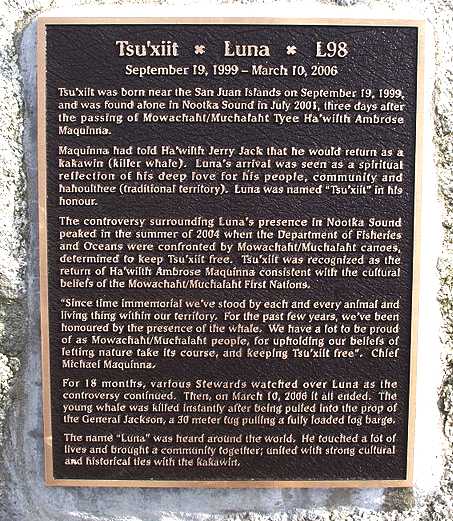
LEGACY
In 2007, CTV produced a made-for-television film, Luna: Spirit of the Whale, starring Adam Beach, Jason Priestly, Tantoo Cardinal, and Graham Greene. The film is a fictionalized account of Luna's story, containing many real aspects of Luna's life, and was filmed on location in Nootka Sound and at
Gold River.
The documentary, Saving Luna, produced by Suzanne Chisholm and Michael Parfit, played in theaters across Canada in 2009. The film received awards from around the world and was broadcast on the CBC in 2009. It was broadcast in 2010 on the BBC with the title A Killer Whale Called
Luna, and in 2011, with Ryan Reynolds and Scarlett Johansson as executive producers, turned into the theatrical film The Whale.
The song Tsuxiit from Islands' 2006 record Return to the Sea is named after Luna, with footage of Luna taken by Nicholas Thorburn serving as the music video for the song.
On July 19, 2012 a female orca named Lovey gave birth to a female orca later named Luna in
Japan.
BRITISH
COLUMBIA SALMON SHORTAGE 2008
Seven endangered southern resident killer whales are believed to have died over the last year, leading some orca watchers to fear for the survival of the three pods that spend their time around southern Vancouver Island and Puget Sound.
The tally comes from the Center for Whale Research in Friday Harbour, which had difficulty completing its count this year because the whales were unusually spread out.
If all seven have died, it brings the population to 83 and represents the biggest die-off in 10 years. The population is believed to have stood historically at about 120 and its lowest point, after decades of shooting and capture, was 71 in 1973.
“I believe they are starving,” said Ken Balcomb, Center for Whale Research executive director. “They need to eat, and that means they need chinook salmon. We have to manage our wild salmon properly, and that means for the benefit of the ecosystem and natural world, rather than jobs.”
Some deaths had already been reported, such as the unsurprising death of 98-year-old K7, known as Lummi. Two of the three calves born in the last year — L111 and J43 — have also died. That mortality rate is not unusual, as the survival rate for calves in the first year is 50 per cent, Balcomb said.
However, alarm signals are going up because of the presumed death of two breeding age females, including the mother of Luna, the lone killer
whale which turned up in Nootka Sound and died two years ago.
Luna’s mom, L67, known as Splash, was 33 years old and Luna’s six-year-old brother, L101, known as Aurora, is also missing.
The other female is J11, known as Blossom, who was about 36. The final missing whale is L21, Ankh, who was 58.
“It’s devastating, and all the more tragic to be losing reproductive females,” Balcomb said.
Splash, before she disappeared, had a “peanut head,” meaning a dip below the blowhole, which usually indicates the whale is starving.
If the chinook salmon shortage can be turned around and the whales can survive the lean years, they have a chance, Balcomb said.
“But it’s going to be at least 20 years of nail-biting to see if they are going to make it.”
Brad Hanson, a wildlife biologist with National Marine Fisheries Service in Seattle, said it’s disconcerting to lose the breeding females.
The death rate is higher than seen recently, and it’s probable that shrinking supplies of chinook are at least a contributing factor, Hanson said.
“We are getting a much better idea of which stocks are important,” he said.
Hanson is studying a biopsy taken from Splash last year, when she was healthy, and another sample taken a few weeks before she disappeared.
“That might give us a better idea of what these animals are facing,” he said.
Studies conclude that the major risks for the southern residents are lack of salmon, toxins in the water and disturbance from boats.
A number of environmental groups are suing the federal government for failing to protect the critical environment of the southern resident orcas and the threatened northern residents under the Species at Risk Act.
Howard Garrett of the Orca Network fears this year is the start of a downturn in the population.
“This is a drastically steep drop-off and, if the conditions don’t improve, meaning more chinook, we might see this for the next few years and this population can’t stand that,” he said.
“It’s hard to imagine they could disappear.”
Let's
face it, humans like whales and whales like humans. The same goes for
dolphins. Anyone who thinks otherwise has never seen these pictures. Has
anyone ever seen a fish that is friendly with a human? We doubt it, but if
anyone knows of a real life fish tale, we'd like to hear it - especially
if it's a friendly great white. The reason
we can communicate with whales is because they have relatively large
brains and are mammals, like us.
MOVIE
REVIEWS DECEMBER 4 2012 - “THE WHALE”
ON DIGITAL AND DVD
“Wondrous to behold”—The New York Times
“Visually stunning”—Washington Post
November 15, 2012 – New York — Narrated by Ryan Reynolds, THE WHALE tells the remarkable true story of a young killer whale who lost contact with his family on the coast of
British Columbia and became famous worldwide when he tried to befriend humans.
The film describes how the little whale, nicknamed Luna, finds himself alone in Nootka Sound, a fjord on the west coast of Vancouver Island. But killer whales are as social as humans, so, though Luna has plenty of fish to eat, he starts popping up beside boats and docks to make friendly contact with surprised fishermen, loggers, and townspeople. Like a gregarious visiting extraterrestrial doing zany things to get attention, Luna generates laughter, love and controversy as scientists, government officials, a Native American tribe and the people Luna befriends all try to figure out what to do about him, and debate whether his connection with humans is wonderful and amazing or dangerous and wrong.
Releasing on December 4 from Docurama Films, a label of Cinedigm Entertainment Group (NASDAQ: CIDM), THE WHALE is a narrative that covers four true but almost unbelievable years of the young whale’s life. Filmed as it happened by the people of Nootka Sound and by a husband and wife team that spent years following every twist and turn of the drama, the movie is a luminous, intimate portrait of a whale in need and the people who love him.
Luna’s life among humans challenges preconceptions about both science and the spirit, making us rethink our most fundamental ideas about the nature of love and friendship. The film celebrates the life of a smart, friendly and transcendent being who appeared among us like a promise out of the blue: that the greatest secrets in life are still to be discovered.
THE WHALE was named Critics Pick by The New York Times and the Washington Post. It is the winner of the Outstanding Achievement in Filmmaking (Environmental) Award at the 2012 Newport Beach Film Festival and the Audience Choice at the Environmental Film Festival at Yale and was an official selection at the Beijing International Film Festival.
“An amazing movie - you must go see it.” - Ellen DeGeneres
THE WHALE is directed Suzanne Chisholm and Michael Parfit; executive produced by Ryan Reynolds, Scarlett Johansson and Eric Desatnik; produced by Suzanne Chisholm; written and edited by Michael Parfit; narrated by Ryan Reynolds; with music by David Partfit and Tobin Stokes. Bonus features include exclusive interviews about Luna’s family, Luna’s birth drama, deleted scenes, and four “songs for Luna” music videos.
Pricing: $29.95 US
Runtime: 84 mins. + extras
Rating: G
Catalog #: NNVG281050
Language: English
Color: Color
Audio Format: Dolby Digital 5.1 Stereo
Genre: Documentary
About Docurama Films
In 1999, Docurama Films® launched with the first feature documentary available on DVD: D.A. Pennebaker’s iconic film on Bob Dylan, “Dont Look Back.” Twelve years and 300 award-winning, highly-acclaimed documentary titles later, Docurama continues to discover and release the greatest non-fiction films of our time while spreading the word about filmmakers who are taking the form to new heights. Docurama’s catalog features an array of topics including the performing and visual arts, history, politics, the environment, ethnic and gender interests, and all-time favorites including “The Wild Parrots of Telegraph Hill,” “Andy Goldsworthy: Rivers and Tides” and “King Corn.” Recent titles include the Oscar®-nominated films “Gasland,” “Hell and Back Again” and “Paradise Lost 3: Purgatory.”
www.docuramafilms.com
Cinedigm Entertainment Group
Cinedigm Entertainment Group (CEG), a division of Cinedigm Digital Cinema Corp., is an end-to-end digital distribution company delivering content in theaters, across digital and on-demand platforms, and on DVD/Blu-ray. CEG reaches a global digital audience through partnerships with iTunes, Netflix, Amazon, Google, Hulu, Vudu, Xbox, Playstation, and others. The company’s library of over 5,000 titles includes award-winning documentaries from Docurama Films®, next-gen indies from Flatiron Film Company® and acclaimed independent films and festival picks through partnerships with the Sundance Institute and Tribeca Film. CEG is proud to distribute many Oscar®-nominated films including Hell and Back Again, GasLand, Waste Land, Paradise Lost 3: Purgatory, A Cat in Paris and Chico & Rita. Current and upcoming CEG multi-platform releases include The Invisible War, Citadel, In Our Nature, 22 Bullets and Don’t Stop Believin’: Everyman’s Journey. [CIDM-G]
www.cinedigm.com
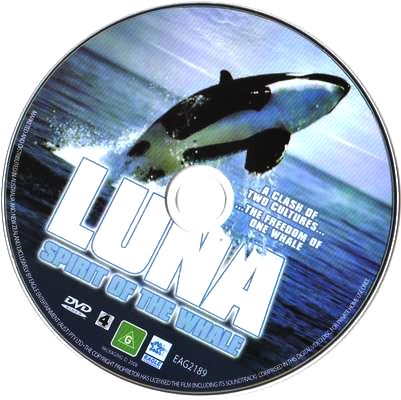
THE
PRODUCERS
We
were really saddened to learn of the break-up of Scarlett Johansson's two-year marriage to Ryan Reynolds.
It is brilliant that they still managed to put this one together despite
what must have been difficult times. In 2011 speculation ran riot as to
whether celeb couple Rynolds and ScarJo should stay together for the
movie. When the couple announced their split, whale-loving celeb junkies
all over the world were wondering what would happen. They supposed the
film might meet the same fate as the celebrity producers' marriages. Blake
Lively (Green Lantern) was held to be partly to blame for the split, but
these things happen and there was a respectable pause before re-marriage.
Scarlett is so hot she had no trouble finding partner Romain Dauriac. Best
of luck to both producers and their spouses and nice one for giving us
this wonderful movie.
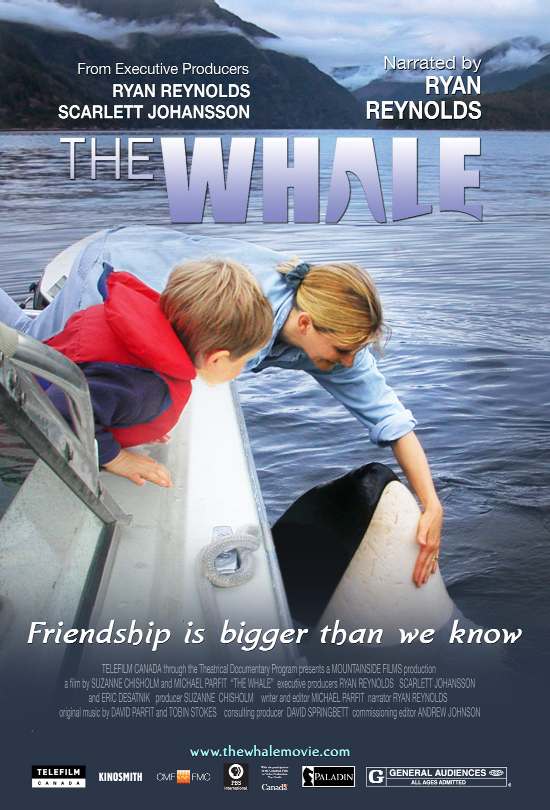
CONTACTS
If you'd like to receive periodic
updates on this project why not join their email list.
Suzanne Chisholm and Michael Parfit
Mountainside Films Ltd.
P.O. Box 2781
Sidney, British Columbia V8L 5Y9
Canada
Tel: 250.217.7573 or 250.589.9574
e-mail: SavingLuna@gmail.com
For questions or comments about the Luna website, email:
webmaster@mountainsidefilms.com
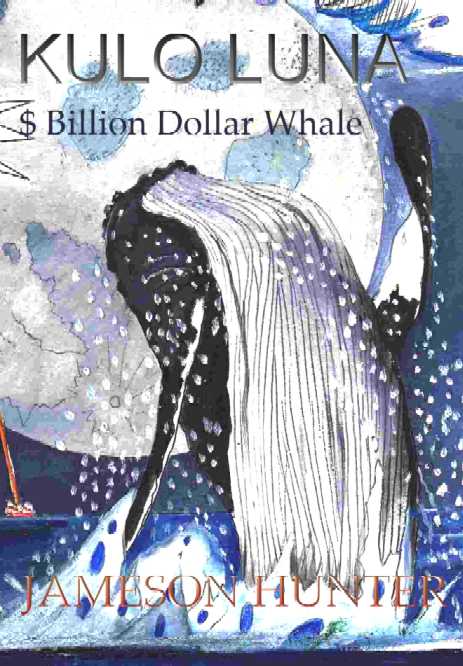
ACIDIFICATION
- ADRIATIC
- ARCTIC
- ATLANTIC - BALTIC
- BERING
- CARIBBEAN - CORAL - EAST
CHINA
ENGLISH CH - GULF
MEXICO
- INDIAN
- MEDITERRANEAN -
NORTH SEA - PACIFIC
- PERSIAN GULF - SEA
JAPAN
STH
CHINA - PLASTIC
- PLANKTON - PLASTIC
OCEANS - SEA
LEVEL RISE
LINKS
& REFERENCE
http://www.canada.com/victoriatimescolonist/news/story.html?id=e44d7605-c555-4d07-b376-53ab0a74f752
http://www.imdb.com/title/tt0861716/
http://www.canada.com/topics/news/national/story.html?id=f3e0b0e8-3336-4bcb-af10-d919a75aa00c http://www.seattlepi.com/local/article/Luna-the-orca-killed-by-tugboat-1198168.php#photo-666821 http://en.wikipedia.org/wiki/Luna_%28killer_whale%29
http://www.solarmovie.so/watch-the-whale-2011.html
http://www.savingluna.com/
http://grist.org/article/2010-12-27-like-ryan-reynolds-and-scarlett-johansson-is-the-whale/
http://www.maritimeaustralia.com.au/ http://www.pacific2013.com.au/innovation-awards/index.html
|








